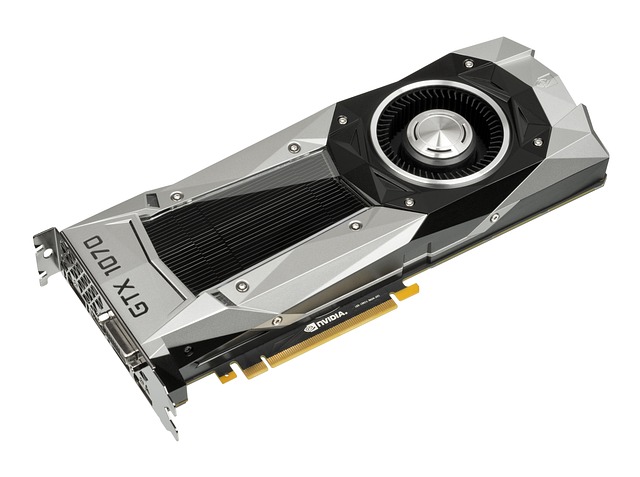Inside the Quiet Cooling Revolution: How Liquid Metal is Transforming PC Thermals
The world of PC cooling has been undergoing a silent transformation, one that could fundamentally change how we think about thermal management in our most powerful computing devices. While traditional thermal pastes and pads have dominated for decades, liquid metal - a once-niche solution reserved for the most dedicated overclockers - is now entering the mainstream. This shift promises cooler processors, quieter systems, and potentially longer-lasting electronics, but it brings complexities and risks that manufacturers and users alike must navigate.

The metallic solution to our hottest computing problems
Liquid metal thermal interface materials (TIMs) aren’t new innovations - enthusiasts have been applying these gallium-based compounds to their CPUs for years, seeking the ultimate thermal conductivity. What’s changing is their adoption by major manufacturers. Unlike traditional thermal pastes that typically conduct heat at 5-8 W/mK (watts per meter-Kelvin), liquid metal compounds often exceed 70 W/mK - a massive improvement in thermal transfer efficiency.
The science behind liquid metal is fascinating. These compounds, typically gallium-indium-tin alloys, remain liquid at room temperature while maintaining excellent thermal conductivity properties. When applied between a CPU and cooler, liquid metal eliminates microscopic air gaps that traditional pastes struggle to fill completely. The result is substantially improved heat transfer from processor to cooling solution, allowing either cooler operation at the same performance level or higher performance at the same temperature threshold.
From extreme enthusiasts to everyday laptops
The journey of liquid metal from niche modding forums to mass-market products tells a compelling story about the maturing of PC technology. Five years ago, applying liquid metal was considered a high-risk modification that could potentially destroy expensive components if done incorrectly. The electrically conductive nature of these compounds meant that any spill could create catastrophic short circuits.
Gaming laptop manufacturer Asus was among the first to take the leap, incorporating liquid metal in their 2020 ROG lineup. Their engineers developed specialized manufacturing processes and containment methods to safely apply the material at scale. Initial testing showed temperature reductions of 10-20°C compared to standard thermal pastes - a remarkable improvement that translates directly to better sustained performance in thermally-constrained laptop environments.
Today, the trend has accelerated. Dell’s Alienware division, MSI, and Lenovo have all introduced models featuring liquid metal thermal solutions. Even more telling, this technology has begun appearing in productivity-focused ultrabooks where noise and thermal throttling were previously accepted limitations.
The manufacturing challenge behind the metal
Incorporating liquid metal into mass production presents unique challenges that manufacturers have had to solve. Unlike traditional thermal pastes that can be applied with simple pressure techniques, liquid metal requires precise application methods to prevent spillage onto surrounding components.
Asus developed a specialized automated process they call “Matrix” that applies a carefully controlled amount of liquid metal and contains it within the CPU mount. Other manufacturers have created similar proprietary solutions, including custom dam structures around processors and specialized application patterns designed to retain the fluid metal.
The price impact of these more complex manufacturing processes has been surprisingly modest. While liquid metal itself costs more than standard thermal compounds (approximately $15-25 retail for DIY applications versus $5-10 for premium thermal pastes), the manufacturing scale has kept the feature as a modest premium rather than a luxury add-on. Most laptops featuring liquid metal cooling carry a $50-100 price premium over identical models with conventional cooling - a reasonable cost given the performance benefits.
Real-world performance: marketing hype or meaningful improvement?
Beyond the technical specifications and marketing claims, the practical benefits of liquid metal are becoming increasingly clear through independent testing. In sustained workloads like video rendering or gaming sessions lasting several hours, systems with liquid metal typically maintain higher clock speeds with lower fan noise.
Testing by technical reviewers has shown that on identical hardware, liquid metal implementations often allow processors to maintain maximum turbo frequencies 15-20% longer before thermal throttling occurs. For gaming laptops, this translates to more consistent frame rates during extended play sessions. For content creation workloads, rendering times can improve by 5-10% solely due to better thermal performance allowing processors to maintain higher clocks.
The noise reduction element shouldn’t be understated either. With more efficient heat transfer, cooling systems don’t need to work as hard. This results in fan speeds that are typically 200-400 RPM lower under load, producing a measurable reduction in acoustic output - particularly welcome in thin-and-light systems where cooling has traditionally been a compromise.
Looking forward: the future of device cooling
As processors continue packing more cores and drawing more power into increasingly compact form factors, thermal solutions like liquid metal may transition from premium feature to necessity. Intel’s latest-generation desktop processors can draw over 250 watts under full load, while AMD’s competing chips aren’t far behind. These thermal demands make every degree of cooling efficiency critical.
The next evolution appears to be direct-die cooling, where liquid metal is applied to processors without the traditional integrated heat spreader serving as an intermediary. This approach is already appearing in some premium gaming laptops and promises even greater thermal efficiency, though it introduces additional engineering challenges.
For the average consumer, this cooling revolution means devices that perform better for longer periods while generating less noise. For manufacturers, it represents both a technical challenge and a marketing opportunity to differentiate their products in an increasingly competitive market. And for the PC industry as a whole, it signals a welcome focus on thermal performance as a critical element of the overall computing experience rather than a secondary consideration.
As liquid metal continues its transition from enthusiast modification to standard feature, it represents one of the more significant advancements in PC cooling technology in recent years - a quiet revolution that’s helping our most powerful devices stay cool under pressure.





